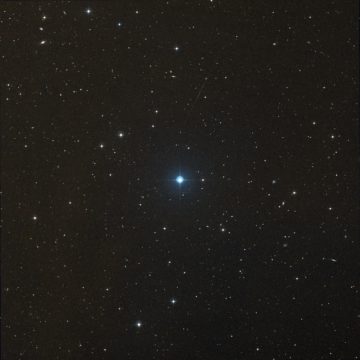The colors of stars are often compared to those of precious gemstones, with the coolest stars as our rubies and the hottest as sapphires. But how red or blue do they really look?

POSS II / CalTech / STScI / Palomar Observatory
In the May 2019 issue, Sky & Telescope Contributing Editor Sue French offers a look at some of the season's most colorful stars, starting with the resplendent red carbon star V Hydrae and ending with the brilliant blue subdwarf HIP 81145.
Below you'll find a table that includes the color indices (very red stars have positive numbers, blue stars have negative) as well as the positions (RA and Dec.) for the stars discussed in the May Deep-Sky Wonders column.
The red stars listed here are all variable stars. Though perceptibly red or orange, the intensity of a variable star's color changes as the star moves through its cycle (the dimmer the star, the redder it looks). If you get hooked on the romance of red, be sure to check out our carbon star observing guides here and here.
Jewels of Spring
| Object | B – V | RA | Dec. |
| V Hydrae | 5.5 | 10h 51.6m | –21° 15′ |
| SS Virginis | 4.2 | 12h 25.2m | +00° 46′ |
| RY Draconis | 3.3 | 12h 56.4m | +66° 00′ |
| T Lyrae | 5.5 | 18h 32.3m | +37° 00′ |
| HIP 40047 | –0.30 | 8h 10.8m | +74° 58′ |
| HIP 52849 | –0.23 | 10h 48.4m | +37° 34′ |
| HIP 55051 | –0.21 | 11h 16.2m | –3° 28′ |
| Spica | –0.24 | 13h 25.2m | –11° 10′ |
| HIP 81145 | –0.28 | 16h 34.4m | –4° 01′ |
B – V data are from recent catalogs. Right ascension and declination are for equinox 2000.0.
 0
0
Comments
You must be logged in to post a comment.